Family: Tenthredinidae
Family common name: common sawflies
Subfamily: Selandriinae
Tribe: Selandriini
Genus: Brachythops Curtis, 1839
Subgenera: none
The Tenthredinidae are the most species-rich family and are found throughout the world, in all continents but Antarctica. They are known as the “common sawflies.” They can generally be recognized by a cylindrical body and long, segmented antennaeantenna:
the sensory organ emerging from the front of the head, usually between the compound eyes and above the clypeus; includes the flagellum, scape and pedicel
 . Otherwise, they come in a variety of colors, sizes, and forms (Goulet 1992Goulet 1992:
. Otherwise, they come in a variety of colors, sizes, and forms (Goulet 1992Goulet 1992:
Goulet H. 1992. The genera and subgenera of the sawflies of Canada and Alaska: Hymenoptera. Symphyta. The insects and arachnids of Canada. Part 20. Agriculture Canada Publication.).
Sawflies in the Selandriinae subfamily are relatively small and slender. The range of Selandriinae is worldwide; it occurs on all continents except Antarctica (Goulet 1992Goulet 1992:
Goulet H. 1992. The genera and subgenera of the sawflies of Canada and Alaska: Hymenoptera. Symphyta. The insects and arachnids of Canada. Part 20. Agriculture Canada Publication.). It is the most common and diverse group of tenthredinids in tropical regions, particularly in Central America, South America, and Southeast Asia (Smith 1969eSmith 1969e:
Smith DR. 1969e. Nearctic Sawflies. II. Selandriinae: Adults (Hymenoptera: Tenthredinidae). Technical Bulletin, U.S. Department of Agriculture 1398: 1-48.). Selandriinae contains the only known sawflies that feed on non-vascular plants, specifically ferns (Smith et al. 2013Smith et al. 2013:
Smith DR, Janzen DH and Hallwachs W. 2013. Food plants and life histories of sawflies of the families Argidae and Tenthredinidae (Hymenoptera) in Costa Rica, a supplement. Journal of Hymenoptera Research 35: 17-31. https://doi.org/10.3897/JHR.35.5496). The subfamily can be distinguished from other subfamilies by wing venationvenation:
the network of veins on a wing
(Goulet 1992Goulet 1992:
Goulet H. 1992. The genera and subgenera of the sawflies of Canada and Alaska: Hymenoptera. Symphyta. The insects and arachnids of Canada. Part 20. Agriculture Canada Publication.).
Brachythops are about 5–6.5 mm in length and mostly black with an orange abdomenabdomen:
the third and last segment of an insect's body; in sawflies this is usually made up of 11 segments (segments 9 and 10 often fused) and short, stout antennaeantenna:
and short, stout antennaeantenna:
the sensory organ emerging from the front of the head, usually between the compound eyes and above the clypeus; includes the flagellum, scape and pedicel
 (Smith 1969eSmith 1969e:
(Smith 1969eSmith 1969e:
Smith DR. 1969e. Nearctic Sawflies. II. Selandriinae: Adults (Hymenoptera: Tenthredinidae). Technical Bulletin, U.S. Department of Agriculture 1398: 1-48.).
There are four described extantextant:
in existence; opposite of extinct
species worldwide. Two species occur in North America (Taeger et al. 2010Taeger et al. 2010:
Taeger A, Blank SM, and Liston AD. 2010. World Catalog of Symphyta (Hymenoptera). Zootaxa 2580: 1-1064.).
A key to NearcticNearctic:
describing the region of the Northern Hemisphere that includes North America south through northern Mexico
 species is included in Smith 1969eSmith 1969e:
species is included in Smith 1969eSmith 1969e:
Smith DR. 1969e. Nearctic Sawflies. II. Selandriinae: Adults (Hymenoptera: Tenthredinidae). Technical Bulletin, U.S. Department of Agriculture 1398: 1-48..
Subfamily characters
 vein Rs+M curved near intersection with veinvein:
vein Rs+M curved near intersection with veinvein: Sc+R (Smith 1969eSmith 1969e:
Sc+R (Smith 1969eSmith 1969e: vein M meeting Sc+R basalbasal:
vein M meeting Sc+R basalbasal: vein 2r-m present (Goulet 1992Goulet 1992:
vein 2r-m present (Goulet 1992Goulet 1992:Genus characters
 margin straight or shallowly emarginated (Smith 1969eSmith 1969e:
margin straight or shallowly emarginated (Smith 1969eSmith 1969e: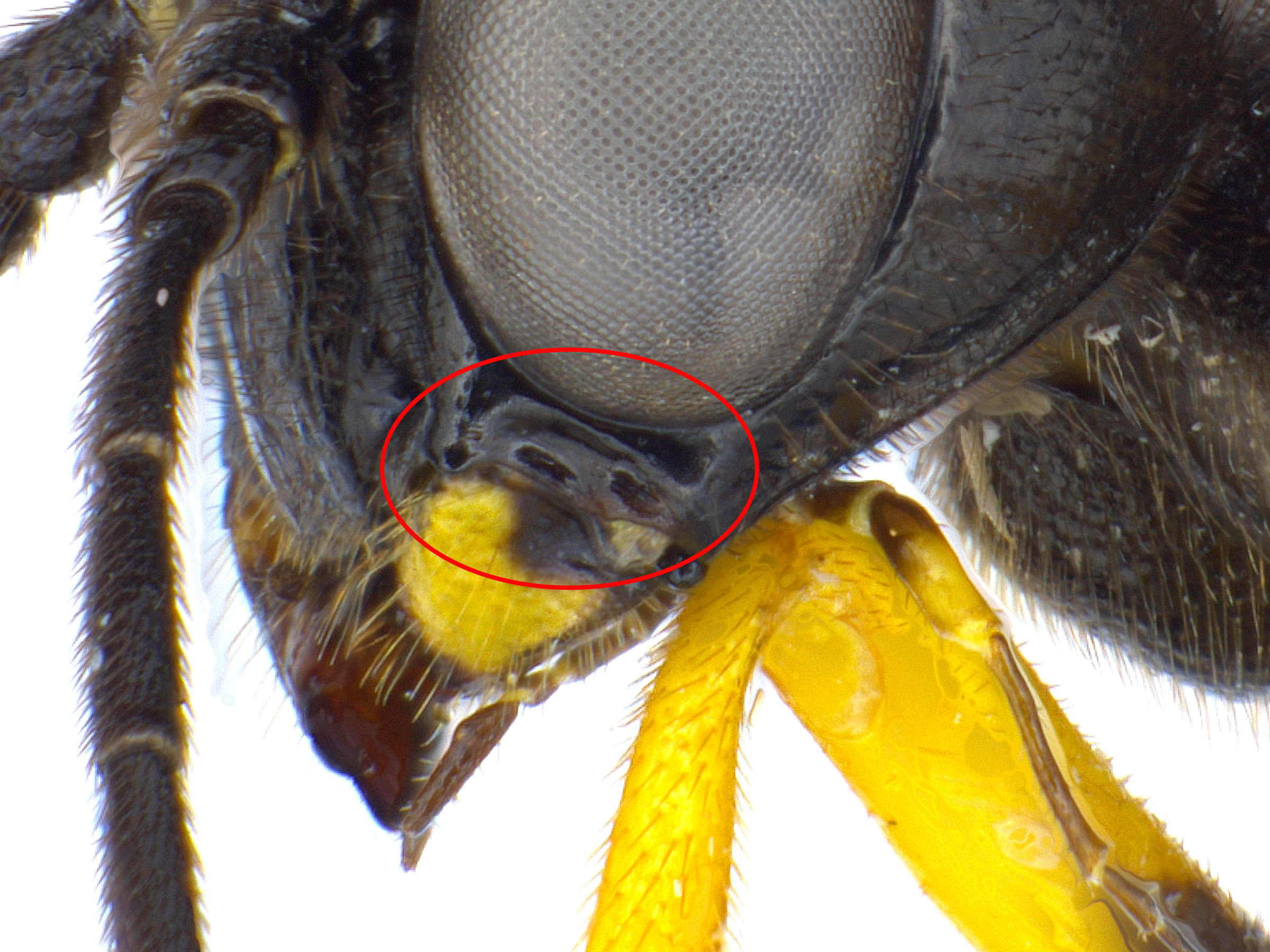 length twice the diameter of the front ocellusocellus:
length twice the diameter of the front ocellusocellus: (Smith 1969eSmith 1969e:
(Smith 1969eSmith 1969e: as long as wide (Smith 1969eSmith 1969e:
as long as wide (Smith 1969eSmith 1969e: cellcell:
cellcell: 1M slightly narrowed at apexapex:
1M slightly narrowed at apexapex: anal crossveinanal crossvein:
anal crossveinanal crossvein: veins M and M+Cu1 widely separated from intersection M and cu-a (Goulet 1992Goulet 1992:
veins M and M+Cu1 widely separated from intersection M and cu-a (Goulet 1992Goulet 1992: vein 1r-m intersecting veinvein:
vein 1r-m intersecting veinvein: Sc+R (Goulet 1992Goulet 1992:
Sc+R (Goulet 1992Goulet 1992: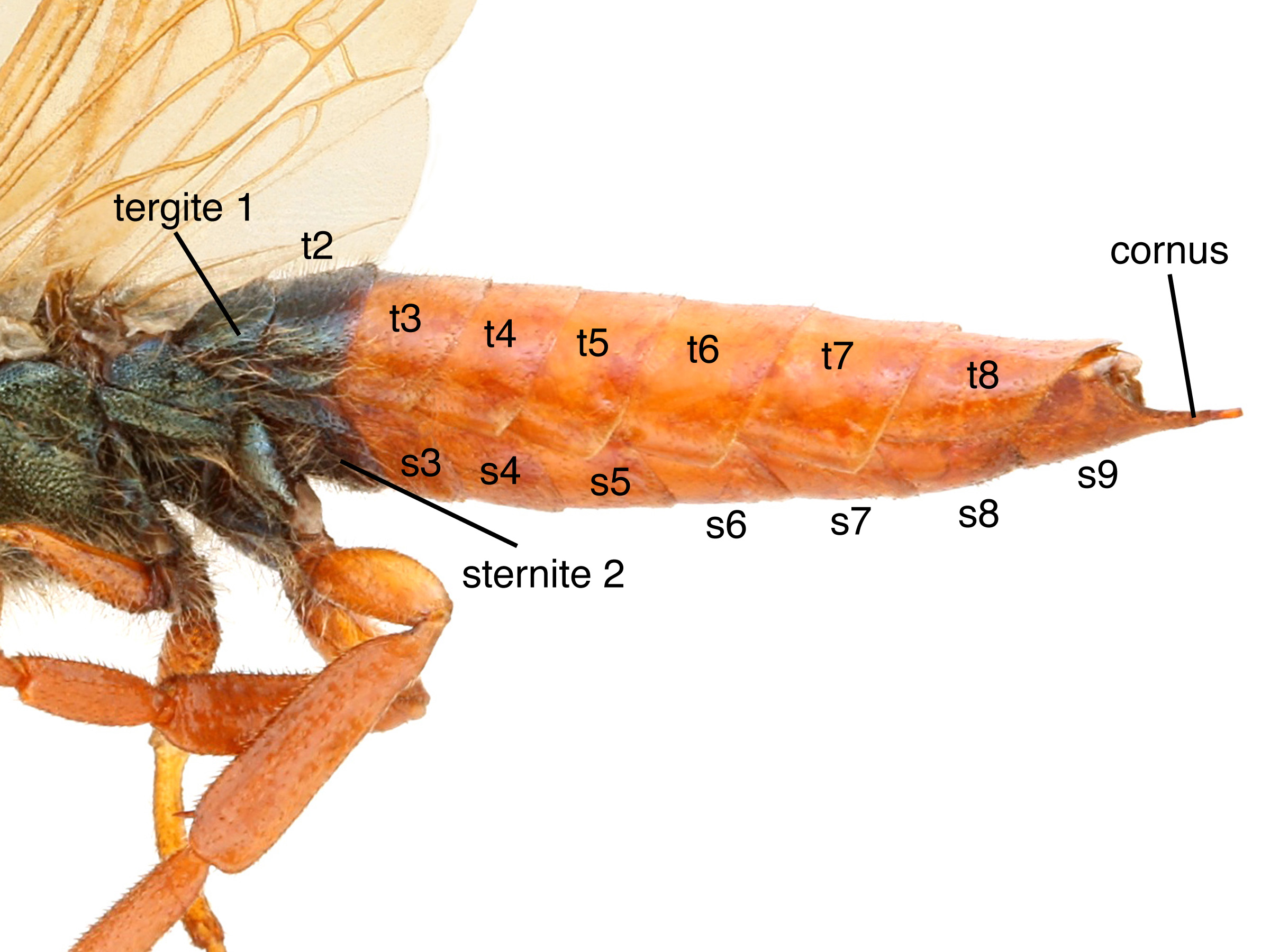 1 wide medially, membranous area narrow (Goulet 1992Goulet 1992:
1 wide medially, membranous area narrow (Goulet 1992Goulet 1992: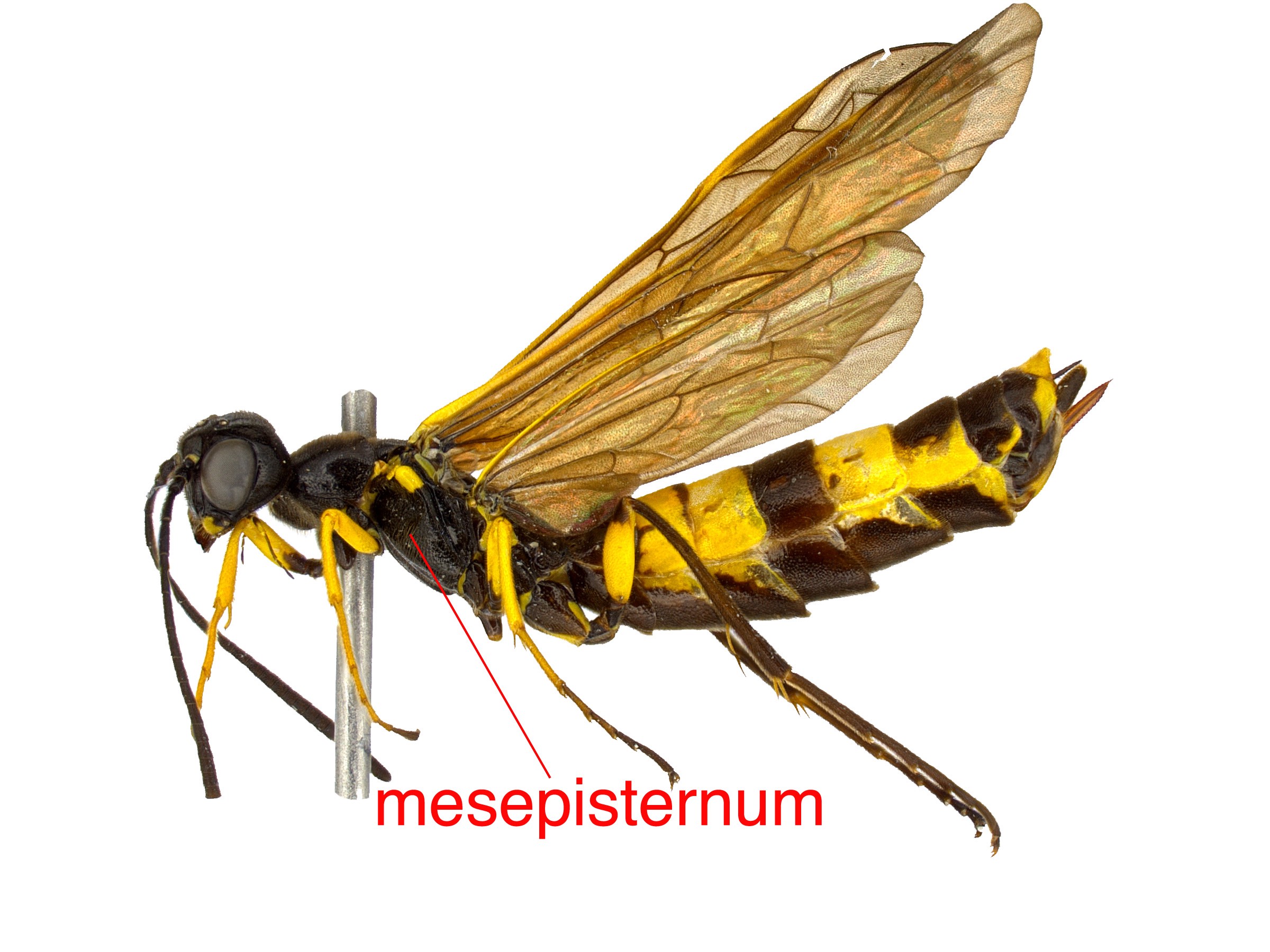 with upside-down V-shaped furrowfurrow:
with upside-down V-shaped furrowfurrow: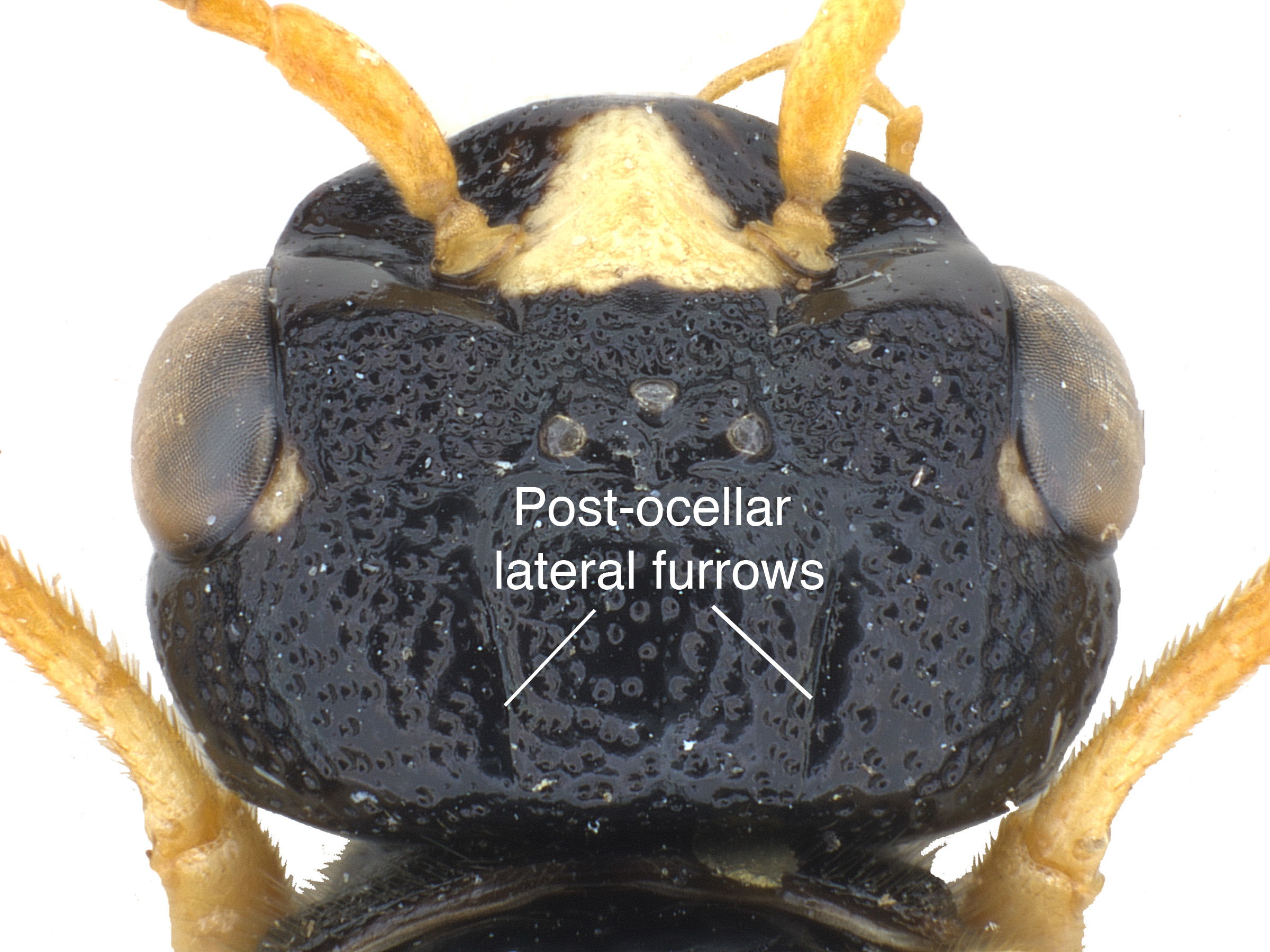 dorsally (Goulet 1992Goulet 1992:
dorsally (Goulet 1992Goulet 1992: with small inner tooth (Smith 1969eSmith 1969e:
with small inner tooth (Smith 1969eSmith 1969e:Brachythops can be confused with similar species in the subfamily Selandriinae. It can be distinguished from most other genera by the upside-down V-shaped furrowfurrow:
a groove or linear depression
 on the mesepisternummesepisternum:
on the mesepisternummesepisternum:
the ventral portion of the mesopleuron, located between the forecoxae and mid coxae
 (Goulet 1992Goulet 1992:
(Goulet 1992Goulet 1992:
Goulet H. 1992. The genera and subgenera of the sawflies of Canada and Alaska: Hymenoptera. Symphyta. The insects and arachnids of Canada. Part 20. Agriculture Canada Publication.).
none
In North America, Brachythops feeds on Carex spp. (sedge) (Smith 1969eSmith 1969e:
Smith DR. 1969e. Nearctic Sawflies. II. Selandriinae: Adults (Hymenoptera: Tenthredinidae). Technical Bulletin, U.S. Department of Agriculture 1398: 1-48.).
unknown
World: This genus is HolarcticHolarctic:
describing the region of the Northern Hemisphere that includes both the Nearctic and Palearctic regions
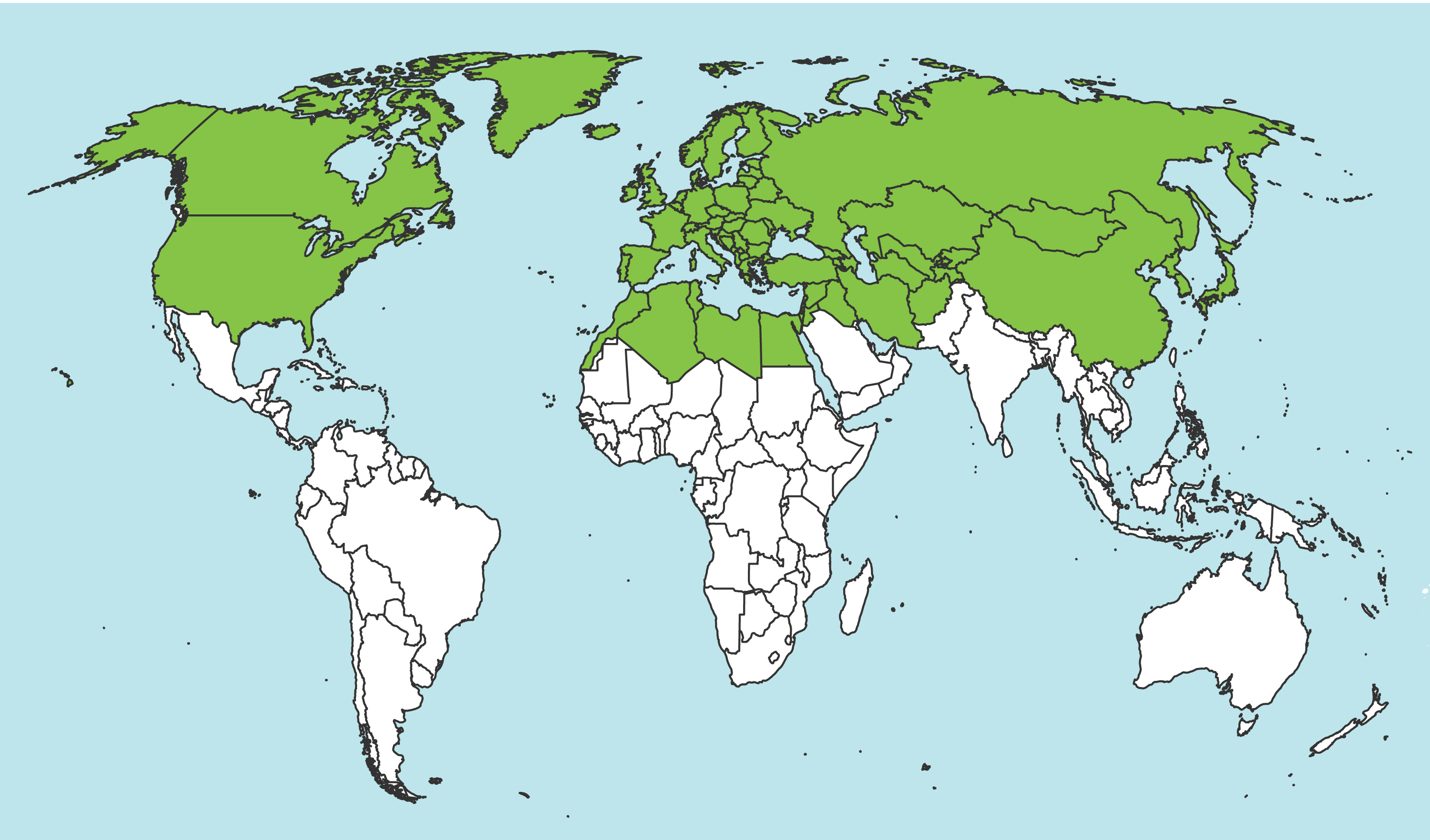 and has a range encompassing North America, central and northern Europe, eastern Russia, and China (Wei et al. 2006Wei et al. 2006:
and has a range encompassing North America, central and northern Europe, eastern Russia, and China (Wei et al. 2006Wei et al. 2006:
Wei M, Nie H, and Taeger A. 2006. Sawflies (Hymenoptera: Symphyta) of Chinamdash;checklist and review of research. Pp. 505-574. In: Blank SM, Schmidt S, and Taeger A, eds. Recent sawfly research mdash; synthesis and prospects. Goecke amp; Evers, Keltern., Lelej and Taeger 2007Lelej and Taeger 2007:
Lelej AS and Taeger A. 2007. Fam. Tenthredinidaemdash;sawflies. Key to the insects of Russian Far East 4: 947-958., Taeger et al. 2010Taeger et al. 2010:
Taeger A, Blank SM, and Liston AD. 2010. World Catalog of Symphyta (Hymenoptera). Zootaxa 2580: 1-1064.).
North America: Brachythops has a northern distribution and is found in Alaska, Yukon Territory, and Northwest Territories, and south through Canada into Colorado, Wisconsin, and New York in the United States (Smith 1969eSmith 1969e:
Smith DR. 1969e. Nearctic Sawflies. II. Selandriinae: Adults (Hymenoptera: Tenthredinidae). Technical Bulletin, U.S. Department of Agriculture 1398: 1-48.).
Map data from: GBIF.org (29 October 2019) GBIF Occurrence Download Brachythops
Details about data used for maps can be found here.